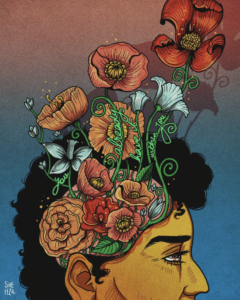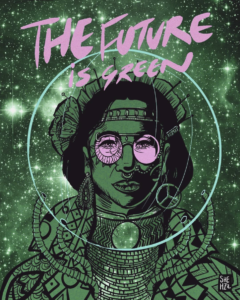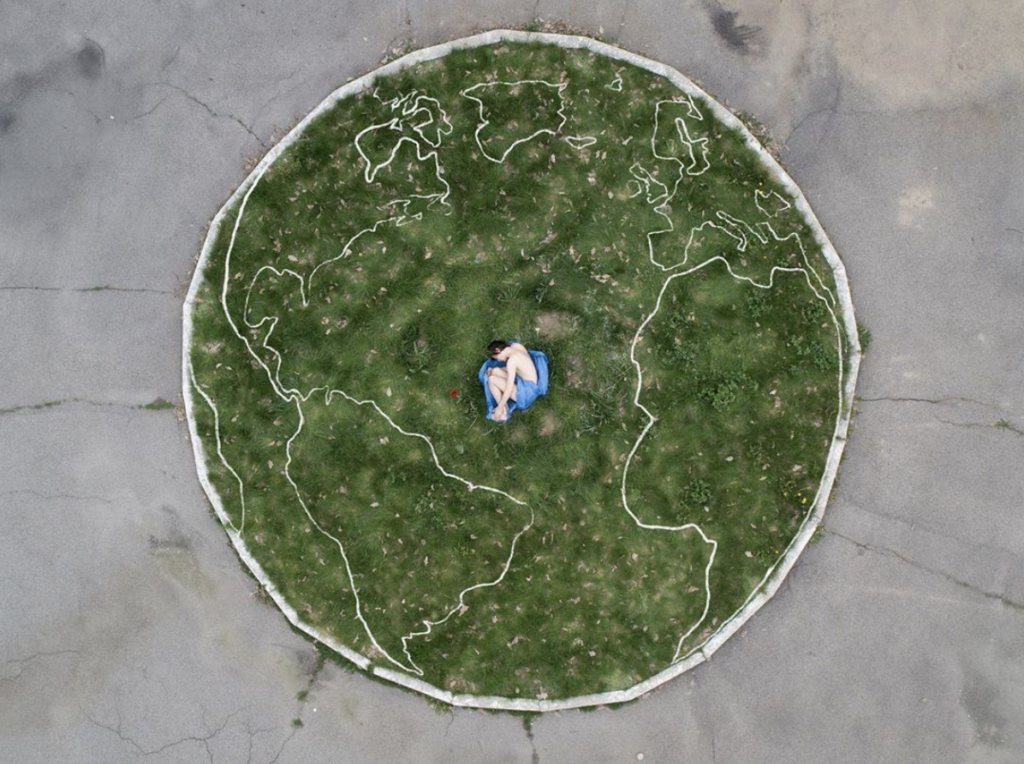Artists for the Earth
Street art campaign Global Halt lives on in the Middle East
June 29, 2020
The coronavirus pandemic forced Earth Day online for its 50th anniversary.
But that didn’t stop millions from mobilizing for the environment. Part of this historic event included the launch of Earth Day Global Halt, a campaign showcasing hundreds of climate-themed pieces from around the world, on April 22.
The project connected artists using the hashtag #2020halt and encouraged them to envision our future as a warming planet.
“[The goal of Global Halt] is to get street artists, graffiti artists, muralists around the world to come together for one united message,” said Meg Zany, a Los Angeles-based street artist who coordinated the project, on Earth Day.
This week, we’re highlighting two artists taking action every day for the environment. After all, Earth Day isn’t just a day — it’s a movement.
Pakistan
Shehzil Malik
Shehzil Malik, a street artist in Pakistan, creates art to amplify female voices in the region.
“I’m inspired by my observations as a woman in Pakistan, my conversations with other women and people different than myself — the uncomfortable ideas not openly talked about,” says Malik. “And the biggest impact of climate change is on the most vulnerable people:women in the Global South. Women-led community movements are integral to achieving climate justice.”

But the environment hasn’t always been central to her art. After the air in her home city of Lahore became unbreathable, things changed.
“I could smell smoke outside,” Malik says. “There was no visibility and I would get headaches spending too much time outdoors. So I sought out environmental activists.”
In 2019, Pakistan ranked second globally in air pollution, with an average PM2.5 concentration six times above the World Health Organization’s recommendation. Lahore ranked twelfth among global cities.
Malik submitted two pieces for the #2020halt street art project. The first highlights human’s destructive relationship with nature, the exact relationship that fueled our current pandemic. The second, “The Future is Green,” reimagines our future without “eurocentric, misogynistic and industrialized norms,” says Malik.

“It would be a civilization based on how much you gave back and not how much you took,” she says. “A picture can speak 1,000 words, so if I draw something that makes you rethink the status quo or think about a story from the point of view of the marginalized, my hope is that it changes your mind and behavior. The first step to changing things is to realize that there is a problem that needs fixing — and this applies to individuals, wider society and environmental issues.”
KAZAKHSTAN
Pasha Cas
Pasha Cas grew up in a very green place, surrounded by nature. Since his childhood in Kazakhstan, though, he’s traveled the world, creating projects in city environments from New York to Moscow.
“Environmental issues have always been important to me,” Cas says. “If you want to say something in street art, you don’t ask permission — you go outside and talk about it through art. And I am incredibly upset about the environmental situation in the world.”
Cas speaks out for freedom of speech for art and artists in Kazakhstan because he knows their importance in social and environmental movements. Kazakhstan faces dangerous levels of air pollution in major cities, radiation from Soviet nuclear testing sites and drinking water shortages.
In 2016, Cas tackled these issues with his mural “Dancing!”, featured above, painted on an apartment building in Temirtau — a residential area with industrial plants. He juxtaposed Henri Matisse’s “Dance,” which originally stood for luminosity, joy and rebirth, around a smokestack.
“Onсe I surfed the internet and came across a photo of the city of Temirtau… I didn’t believe it was in Kazakhstan,” Cas says. “This piece is an all-consuming illusion of satiety, demonstrating the power of those who sit ’on the tube’ over those who dance around it. And we dance desperately around the pipe of fossil natural resources.”

Cas submitted his project, “Child of the Earth,” for the #2020halt street art campaign. In the photo, a person lies in the fetal position in a grass circle to highlight our connection to nature.
“I wanted to say that the Earth is our mother, and humanity is an integral part of the planet, not something foreign and original,” he says. “We must treat the Earth as we treat our mothers.”
Artists are integral to the environmental movement, making the daunting subject of climate change personal. Earth Day Network’s Artists for the Earth campaign connects artists and arts organizations around the world for climate action: Sign up today.
Photo credit for featured photo: Olya Koto, “Dancing!” by @Pashacas on Instagram.
